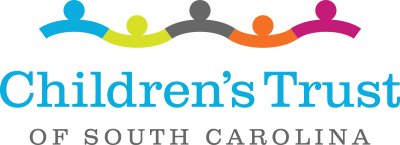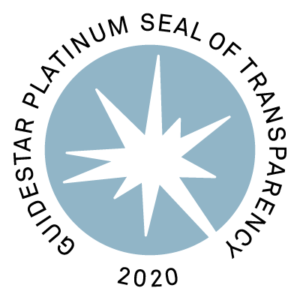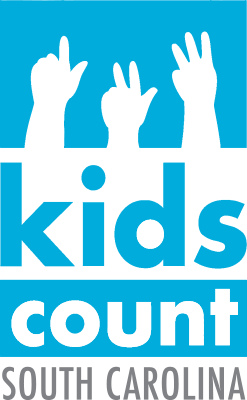The Building Hope for Children Conference featured three days of learning and sharing. Here’s a roundup of the keynote speakers, the news, the reaction and the closing video from the event.
Children’s Trust held its Building Hope for Children Conference on a virtual platform for the first time, and nearly 500 child-serving professionals, home visitors and prevention advocates participated in the biennial event March 23-25. And even though they couldn’t meet face-to-face this time around, they still received an excellent opportunity to learn more about the prevention of child abuse and neglect with a focus on the topics of equity, the protective factors and statewide collaboration.
By attending informative breakout sessions and hearing from national keynote speakers, conference participants in the prevention field – who came from seven states, 39 South Carolina counties and 127 organizations – were able to share knowledge, make connections and leave with actionable takeaways to support child and family well-being.
Children’s Trust CEO Sue Williams thanked attendees for their continuing commitment during these challenging times. She saluted the flexibility and dedication they showed to help families navigate the hardships that were only compounded by the COVID-19 global pandemic and national social unrest.
“This week has been a poignant reminder of the incredible depth and breadth of what you all need to know to help the families you serve as they deal with stress, engage their children, overcome adversity, discover resilience, and combat the impact of racism on well-being,” Williams said. “Thank you for what you do every day for the children and families in your communities. Thank you for going that extra mile. Thank you for investing in yourself so that you can invest in them. We are honored that you joined us.”
Davis Discusses Transformative Change

The final day of the conference ended with iconic social justice activist Dr. Angela Davis discussing the collaboration necessary to achieve community and systems change across the country and the calls to action that can help make it happen.
She spoke of growing up in segregated Birmingham, Ala., and the family ties that carried her through the turbulent times of the civil rights era in the 1950s and 1960s.
“My parents always emphasized the closeness of family and the closeness of community. I grew up with a sense of struggling for a better life,” she said. “My mother always said, ‘This is not the way things are supposed to be.’ … I learned how to inhabit the immediate circumstances and imagine a different future.”
With a mother who was an activist, her upbringing propelled her into a life where the pursuit of social justice became a calling. She was determined to use her time, education and skills to develop connections that would transform the greater community around her.
“My parents gave us the capacity to realize how important it is for family to remain close. They also gave us the capacity to go out into the world.”
A professor and author, Davis continues to fight for justice for Black men, women and children. She notes that many people are reluctant to change the status quo, and for all the progress that has been made since the 1960s, there is still a long way to go.
“I like to think a great deal has changed (in my lifetime). But there has been very little deep, institutional systemic change,” she said. “We can’t continue to assume racism is a character defect or individual flaw. … We have to transform our systems.”
In recent years, a persistent theme of her work has been the range of social problems associated with incarceration and the generalized criminalization of those communities that are most affected by poverty and racial discrimination. She draws upon her own experiences in the early 1970s as a person who spent 18 months in jail and on trial, after being placed on the FBI’s Ten Most Wanted List.
However, she sees hope on the horizon. She cites a “collective epiphany” of the social unrest last year, when both Black and white community members came together across the nation during demonstrations protesting the deaths of George Floyd and Breonna Taylor at police hands.
“This is such a special moment,” she said.
Gunn Delivers Inspirational Message
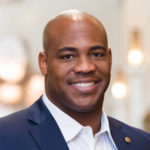
The focus of the first day of the Building Hope for Children Conference centered around equity.
Keynote speaker Anton Gunn gave an informative and inspirational address to an audience that included nearly 100 in the home visiting field. When Children’s Trust had to cancel the 2020 Home Visiting Summit because of the pandemic – when Gunn had been scheduled to be a keynote speaker – that event was merged with the Building Hope.
He spoke of a new way forward that can lead to increased success for families and a more inclusive culture that can positively impact children’s lives.
A health care expert, leadership speaker and author, Gunn detailed how structural racism and economic unfairness result in poor outcomes for children, low social mobility, racial injustice, and toxic living environments for families. State agencies and local organizations must embrace diversity and gain a far greater understanding of inequities within the current system in order to make a true impact in the future for children and families. Unfairness must be addressed by a much higher percentage of people in order to create a better path to healthy and just outcomes.
“Talk is not enough. You’ve got to do something about it,” Gunn said. “Socially-conscious leaders must make it right.”
While systemic inequities may seem too large for an individual social worker or home visitor to address, Gunn said it all begins with these professionals showing how much they care, which builds trust with individual families and creates an environment for larger change.
“It’s the small things that matter. The small things add up to the big things,” he said.
Gunn explained the elements of unfairness in child welfare experiences for Black families: poverty, economic insecurity, lack of social support, and over-reporting. These pervasive issues must be addressed at the highest levels if real systems change in going to be made.
“Racism and racial disparities in child welfare are real. We can’t get better until we acknowledge it.”
Chamberlain Explains Ways to Buffer Stress
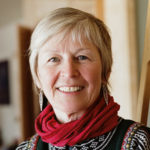
The second day of the Building Hope for Children Conference got off to a strong start with a keynote presentation by Dr. Linda Chamberlain, “Transforming Stress and Trauma: Brain-Body Strategies.”
Founder of the Alaska Family Violence Prevention Project, Chamberlain is an internationally recognized advocate for health issues related to domestic violence, adverse childhood experiences (ACEs), brain development and trauma, and the adolescent brain. She is known for her abilities to translate science into practical information with diverse audiences and convey a message of hope and opportunity.
Chamberlain explained the effects of unaddressed stress and trauma on the brain and body and relayed the latest science on best practices to buffer the effects of stress and transform childhood trauma. Here are a few key points.
- Unaddressed stress gets written in the body. Overwhelming stress and trauma are disorienting.
- Mindful breath and movement are effective strategies to shift stress and improve executive function.
- Emotional regulation is the strongest protective factor.
- Movement and rhythm buffer effects of ACEs.
Leach Commends DSS Staff, Partners for Efforts
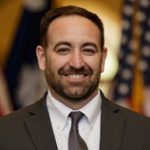
During the S.C. Department of Social Services session on the final day, state director Michael Leach addressed 150 members of DSS staff. Children’s Trust trains DSS employees in the prevention of adverse childhood experiences (ACEs), early childhood development and growth, and child passenger safety at regular seminars, as well as larger events like the Building Hope for Children Conference.
“This year has stretched all of us and tested our resilience,” said Leach, who saluted their service in a time of crisis, applauded the work that led to better outcomes, and thanked statewide partners for their help stepping into gaps. He discussed how “poverty alone does not equate to neglect,” and he added the agency must connect families to resources in order to strengthen them.
Children’s Trust and DSS also team up every April for Child Abuse Prevention Month, an annual awareness campaign that brings together community stakeholders to promote happy, healthy childhoods. The Duke Endowment and DSS are the key funders for the Strengthening Families Program (SFP), which Children’s Trust implements at more than 30 sites around the state.
Leach called it important for DSS workers to engage and team up with families as well as remove the stigma of asking for help. In this most difficult of years, he recognized the work ethic they must have.
“We’re not here to do what is easy. We have to push, we have to grind… we have to stretch ourselves.”
Ambrosio, Miller Recognized for Home Visiting Work

At our home visiting session, Children’s Trust recognized Kelssy Ambrosio, a family support specialist with the Healthy Families America program serving Charleston, Berkeley and Dorchester counties for MUSC Children’s Health, as the Home Visitor of the Year. Her nomination explained the dedication she has shown to her families in the Lowcountry.
“Kelssy’s youth, enthusiasm, empathy and care for her families as well as her professionalism is seen throughout her every day work. The community she serves has many needs that go beyond her home visitor responsibilities. There are many examples that can illustrate her big heart, as well as her efforts to empower families and make the community resources more equitable.”
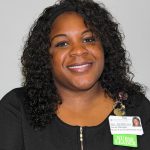
April Miller, nurse manager at Spartanburg Regional Healthcare System’s Nurse-Family Partnership program, was selected as the Community Leader of the Year. Miller also was cited in her nomination for her commitment to improving the lives of young children and families in the Upstate area.
“April is out in the community to get partnerships that will build families up to have the resources to have a better life. Most of the time, poverty just doesn’t come from circumstances but a lack of knowledge, resources and connections. If we can continue to build relationships and partnerships, we can help the community grow to be successful by having the tools. She goes out into the community to educate companies on the great work that we do, and this makes them want to be apart of the solution.”
They Said It
Here’s what attendees were saying on social media and in emails during the Building Hope event.
Wendy Parker-Powell
@BuildingHopeSC @ChildrensTrustS Having educator and activist ‘the’ Angela Davis as the final keynote speaker to an awesome conference was no mistake. Her story was inspiring. A lot we have done and a lot we still have to do. It was an honor!@BuildingHopeSC
‘Transforming Stress and Trauma: Brain-Body Strategies’ was the topic of our Opening Plenary by Dr. Linda Chamberlain. She shared a ton of research and resources that we can use in helping our families at The Parenting Place. #BuildingHopeSC @ChildrensTrustS
I don’t usually do this prior to the completion of a training but I must give Children Trust a huge shout out for the “Building Hope for Children Conference”! I have no words to fully express how informative and impactful the sessions were that I attended. I am excited about tomorrow and Thursday. I wish all my staff and member organizational staff could have attended. WOW just WOW!!!!!!!!!!!
Maggie Meekins
Loving this conference! “Success without a successor is a failure”!
Leticia Urroz
This conference is wonderful!
Thank you to Molina Healthcare for being the presenting sponsor of the conference. We also would like to thank our sponsors, Dominion Energy and the Peabody Foundation, and our programmatic partners, the S.C. Department of Social Services and the U.S. Health Resources and Services Administration, for their support in making this event possible.

